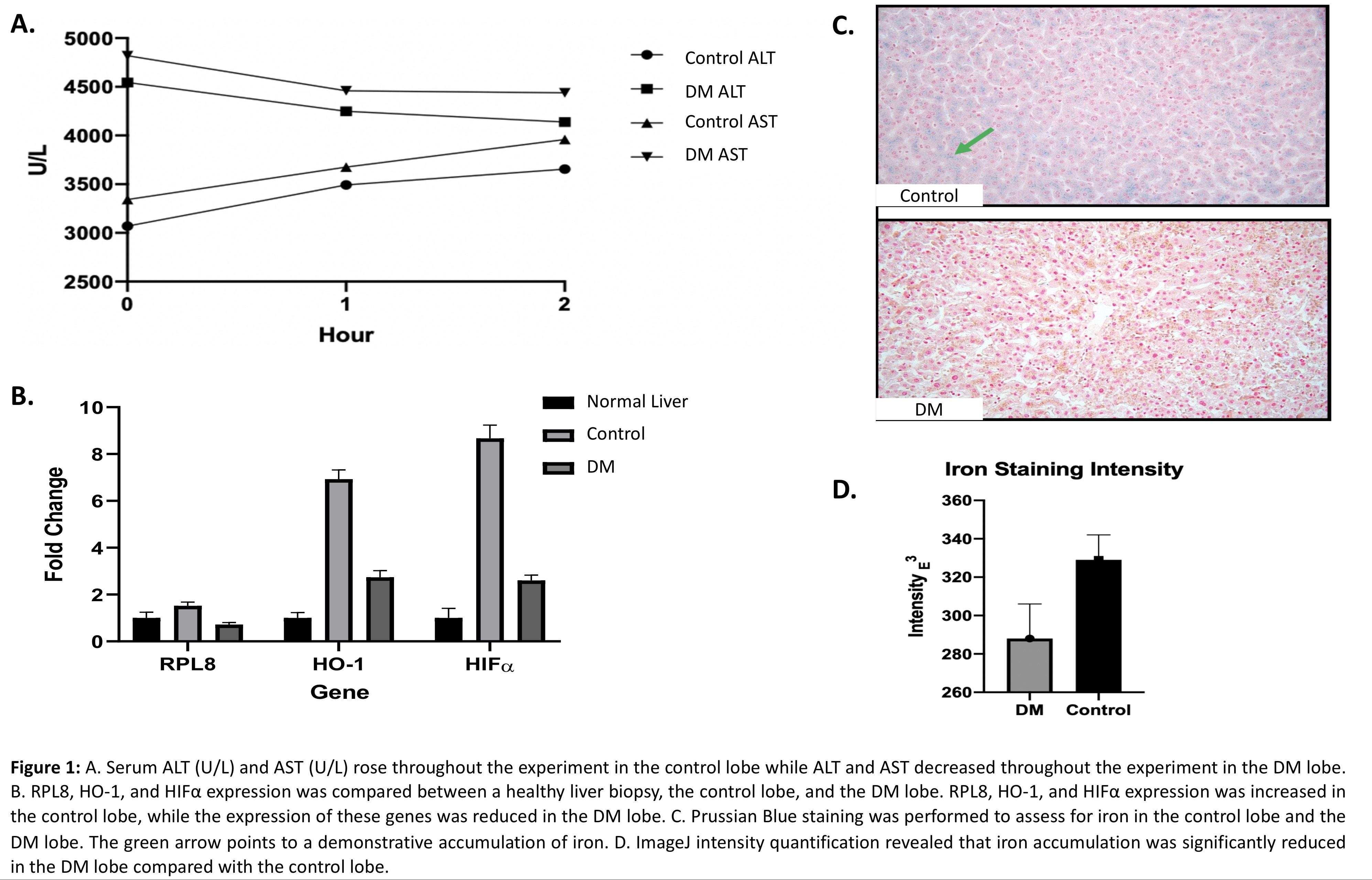Role of Ferroptosis Inhibitors in Mitigating Ischemia-Reperfusion Injury in Marginal Livers Using a Novel Protect Model
Saint Louis University, Saint Louis, MO
Meeting: 2021 American Transplant Congress
Abstract number: 300
Keywords: Donors, marginal, Ischemia, Liver preservation, Liver transplantation
Topic: Basic Science » Ischemia Reperfusion & Organ Rehabilitation
Session Information
Session Time: 10:50am-11:50am
 Presentation Time: 11:20am-11:30am
Presentation Time: 11:20am-11:30am
Location: Virtual
*Purpose: The discard rate of deceased donor livers (DDL) remains high at nearly 9% and incudes livers that are steatotic, old in age, and from donation after cardiac death. The major challenge with marginal DDL (MDL) is severe Ischemia reperfusion injury (IRI) which clinically leads to primary non-function or early graft dysfunction with increased recipient morbidity and mortality. We proposed that reduction of ferroptosis, a form of regulated cell death related to an increase in intracytoplasmic iron, would reduce IRI in MDL. We tested our theory using our previously described PROTECT model (Perfusion Regulated Organ Therapeutics with Enhanced Controlled Testing) using normothermic perfusion of 2 split liver lobes simultaneously with one lobe acting as an internal control for the other.
*Methods: Discarded MDL were split into right and left lobes and perfused using the PROTECT pump. One lobe was treated with deferoxamine (DM) (0.6mmol/L) and the other acted as an internal control. We compared intracellular iron content, biochemical measures, and pre-ferroptotic genes expression between the lobes.
*Results: Both lobes were perfused for 3 hours. Alanine aminotransferase (ALT) and aspartate aminotransferase (AST) decreased in the DM treated lobe throughout the experiment, while ALT (U/L) and AST (U/L) rose in the control lobe (ALT DM lobefinal – initial = -405, ALT Control lobefinal – initial = 586; AST DM lobefinal – initial = -380, AST Control lobefinal – initial = 617) (Figure 1A). Similarly pro-ferroptotic genes, including HO-1 (2.74 vs 6.93), HIF1α (2.60 vs 8.67), and RPL8 (0.72 vs 1.52) fold change expressions were all decreased in the DM lobe compared to the control lobe. The expressions of these genes were additionally compared to a sample taken from a healthy liver (Figure 1B). Lastly, Prussian Blue iron staining and intensity quantification showed a marked decrease in iron quantity in the DM lobe compared to the control lobe (288 ± 18 E-3 vs 329 ± 13E-3; p = 0.036) (Figure 1C and D).
*Conclusions: By administering DM, we reduced the content of iron within hepatocytes, thus reducing ferroptosis as shown by the decreased expression of pro-ferroptotic genes (HO-1, HIF1α, RPL8). In addition, we observed improvement in ALT and AST in the lobe that was treated with DM. Our data suggests that reducing ferroptosis helps to mitigate IRI. This approach could serve as the basis for a clinical trial using DM to reduce IRI in MDL; thus, increasing the utility of such organs.
To cite this abstract in AMA style:
Nazzal MD, Nispen JVan, Armstrong A, Murali V, Song E, Voigt M, Samaddar A, Madsen E, Manithody C, Krebs J, Blackall D, Carpenter D, Varma C, Teckman J, Jain A. Role of Ferroptosis Inhibitors in Mitigating Ischemia-Reperfusion Injury in Marginal Livers Using a Novel Protect Model [abstract]. Am J Transplant. 2021; 21 (suppl 3). https://atcmeetingabstracts.com/abstract/role-of-ferroptosis-inhibitors-in-mitigating-ischemia-reperfusion-injury-in-marginal-livers-using-a-novel-protect-model/. Accessed December 5, 2025.« Back to 2021 American Transplant Congress

